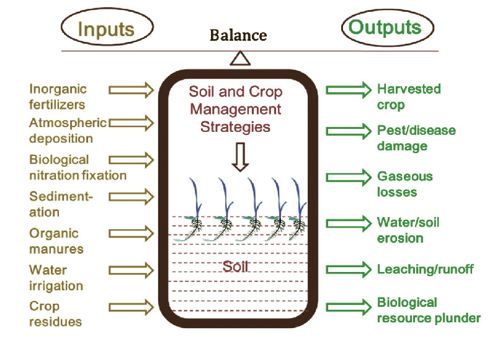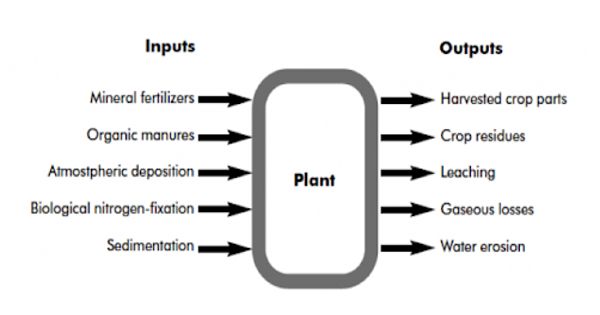Nutrient budgets are the outcome of a simple accounting process that tracks inputs and outputs to a given, defined system over a fixed period of time. These offer insight into the balance between crop inputs and outputs. In short, they compare nutrients applied to the soil to nutrients taken up by crops. It is a management tool that can identify if nutrient inputs to and outputs from a specified area of interest are balanced (inputs = outputs), or if the area has a nutrient deficit (inputs < outputs) or surplus (inputs > outputs).
“A nutrient budget lets you investigate the nutrient flows in your farming system, identifying what blocks or paddocks are ‘leaky’ and vulnerable to nutrient losses.”
A nutrient budget takes into account all the nutrient inputs on a farm and all those removed from the land. They measure or estimate the inputs and outputs of nutrients (usually N, P, and K) to a field, farm, or system, usually at the farm gate. The most obvious source of nutrients in this situation is fertilizer, but this is only part of the picture. Other inputs come with rainfall, in supplements brought on to the farm and in effluent – either farm or dairy factory – spread on the land. More frequent tracking requires more user input, but also provides the greatest opportunity for synchronizing nutrient inputs with crop needs.

The nutrient budgets between inputs and outputs
Farm gate budgets usually include inputs in feed, fertilizers, manures, composts, and bedding and outputs in saleable produce. Nutrients are removed from the farm in stock sold on, products (meat, milk, wool), crops sold or fed out off-farm, and through processes such as nitrate leaching, volatilization, and phosphate run-off, etc. They do usually include the necessarily very detailed measurements of losses such as leaching, denitrification, and ammonia volatilization, consider each field separately or measure transfers between fields.
Importance
Firstly, a nutrient budget lets you investigate the nutrient flows in your farming system, identifying what blocks or paddocks are ‘leaky’ and vulnerable to nutrient losses. An accurate nutrient budget is an important tool to provide an early indication of potential problems arising from (i) a nutrient surplus (inputs>outputs), leading to an accumulation of nutrients and increased risk of loss or (ii) a deficit (outputs>inputs), depleting nutrient reserves and increasing the risk of deficiencies and reduced crop yields. A nutrient budget will show whether you are compliant with the council’s nitrogen loss thresholds based on the Land Use Capability (LUC) of your property.
They also provide regulatory authorities with a readily-determined, comparative indicator of environmental impact. This is important because this determines whether you can operate as a permitted activity (continue as you are) or whether you are required to apply for resource consent (permission required).
Nutrient budgets may seem like an onerous task, to begin with, but when you stop to think about it it’s extremely beneficial to your business. Overall, nutrient budgets help ensure that farming practices are conducted in an efficient, economic, and environmentally sustainable manner. Keeping accurate maps, blocking your farm accurately, and detailing them with soil test information allows you to hold historical data that you never had before.
















